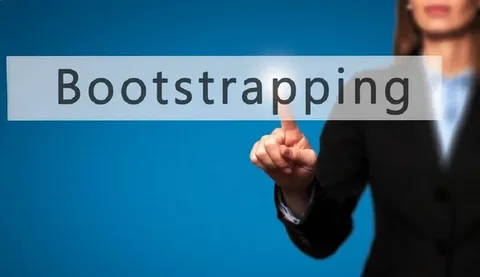What is Bootstrapping in Entrepreneurship?

Bootstrapping in entrepreneurship refers to the process of starting and growing a business using personal savings, revenue from the business, or other non-traditional funding sources rather than relying on external investments. Entrepreneurs who bootstrap their businesses focus on minimizing costs, maximizing efficiency, and reinvesting profits to scale sustainably.
Understanding Bootstrapping
Bootstrapping is an appealing strategy for many startups, especially those looking to maintain full control over their company without diluting ownership by taking on investors. Instead of seeking venture capital or bank loans, bootstrapped businesses rely on self-funding methods such as:
- Personal savings – Entrepreneurs invest their own money to fund the initial costs.
- Customer revenue – Early profits are reinvested into the business for growth.
- Minimal operational costs – Businesses cut unnecessary expenses to remain financially lean.
- Organic growth – Scaling is done gradually through reinvested earnings.
Benefits of Bootstrapping
- Full Ownership and Control – Founders retain 100% ownership, allowing them to make strategic decisions without investor interference.
- Financial Discipline – Since resources are limited, entrepreneurs learn to manage finances efficiently, reducing unnecessary expenses.
- Increased Innovation – Bootstrapped businesses often develop creative solutions to problems due to limited resources.
- Stronger Business Foundations – Without investor pressure to grow rapidly, businesses can focus on long-term sustainability.
Challenges of Bootstrapping
While bootstrapping has many advantages, it also comes with challenges:
- Limited Capital – Without outside funding, growth may be slower.
- High Personal Risk – Entrepreneurs often invest their personal savings, which can be financially risky.
- Cash Flow Struggles – Managing operational costs without external funding can be challenging.
Famous Examples of Bootstrapped Companies
Many successful companies started as bootstrapped ventures before becoming industry leaders. Some notable examples include:
- Mailchimp – Started as a side project and grew into a multi-billion-dollar marketing platform.
- Spanx – Founded by Sara Blakely using personal savings, later becoming a billion-dollar brand.
- GoPro – Nick Woodman launched GoPro with personal funds before it became a major global brand.
Is Bootstrapping Right for Your Business?
Bootstrapping is ideal for entrepreneurs who want to maintain control, prefer a lean approach, and are willing to grow gradually. However, it may not be the best option for businesses that require significant upfront capital to develop products or scale quickly.
If you are considering bootstrapping, focus on keeping costs low, generating revenue early, and reinvesting profits to sustain growth. With the right strategy, bootstrapping can lead to long-term business success.
- Arts
- Business
- Computers
- Jeux
- Health
- Domicile
- Kids and Teens
- Argent
- News
- Recreation
- Reference
- Regional
- Science
- Shopping
- Society
- Sports
- Бизнес
- Деньги
- Дом
- Досуг
- Здоровье
- Игры
- Искусство
- Источники информации
- Компьютеры
- Наука
- Новости и СМИ
- Общество
- Покупки
- Спорт
- Страны и регионы
- World


